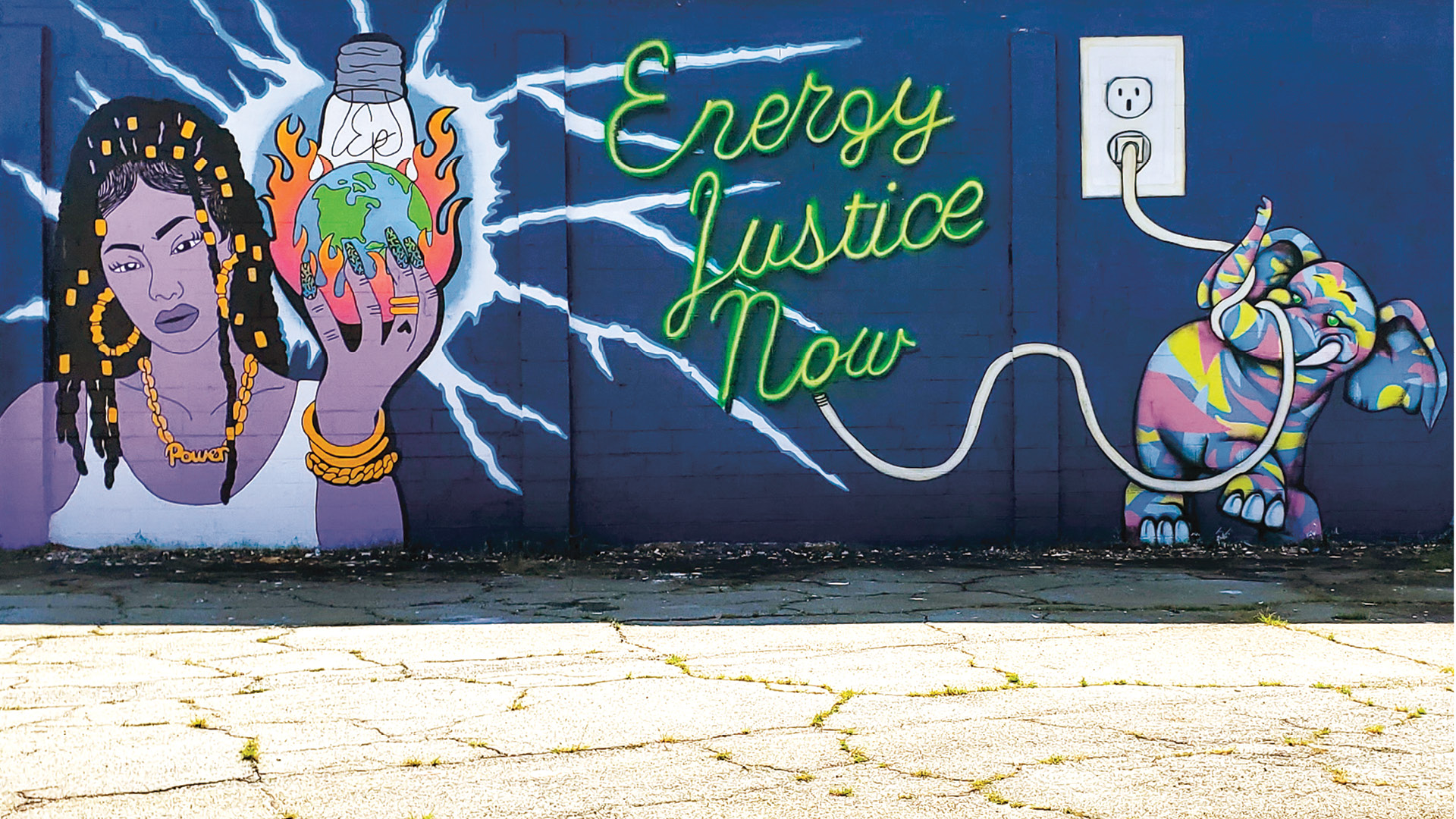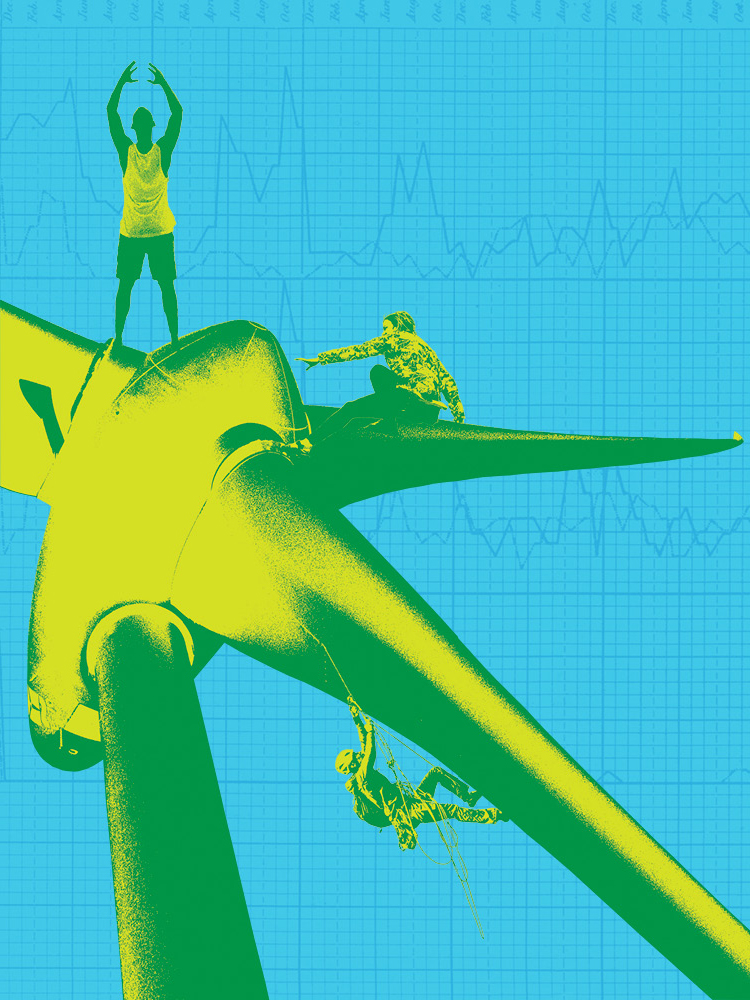
By Alix Hackett
As a college student in her native Colombia, Paula García, MA SID’13, spent vacations working as a ranger in the country’s vast and varied national parks. In addition to the natural beauty, she was struck by the solar panels erected outside many rural communities, allowing for refrigeration and electric lighting hundreds of miles from the nearest power grid, without the noise and pollution of a diesel generator.
“I was mesmerized,” she recalls. “That was the first time I started feeling really enthusiastic about renewables.”
Over the next two decades, García channeled that enthusiasm into a successful career, becoming an expert in renewable energy technology, policies, and markets in the U.S. and abroad. At the same time, she emerged as an outspoken advocate for energy justice, pushing to ensure the transition to clean energy addresses the racial and economic inequities exacerbated by climate change.
“When people think of renewable energy, they immediately think of helping the environment,” she says. “That’s an important piece, but there is so much more to it.”
Taking on climate change
Today, García is a senior bilingual energy analyst in the Climate and Energy program at the Union of Concerned Scientists (UCS), a national nonprofit founded in 1969 by a group of scientists and students at MIT. The organization, headquartered in Cambridge, Mass., uses science to tackle global issues like climate change, sustainable agriculture and nuclear weapons. A staff of around 250 scientists, analysts, and policy and communications experts conducts independent research, works to develop solutions and advocates for policy changes.
García focuses mainly on the electricity sector, where technology and policies around solar and wind power are constantly evolving. This past fall, her team began studying what would happen if 24 states were to transition to 100% renewable energy, factoring in technology trends and costs, regulations and health benefits. When complete, the analysis will serve as a blueprint for states to advance clean energy infrastructure.
García also leads the Massachusetts-based work of UCS by participating in coalitions, speaking regularly with legislators and mobilizing supporters when a climate-related bill or initiative is on the table. In 2016, she worked tirelessly to support the state’s first offshore wind requirement (also the first in the nation), which cemented Massachusetts’ reputation as a leader in renewable energy.
“That was huge, seeing history in the making and being part of it,” she recalls. “I can point to that as one of the most rewarding moments of my career.”

Promoting green technology
García believes wholeheartedly in the potential of renewable energy to replace fossil fuel-based sources, and she also believes, as do most scientists, that the future of our planet depends on it.
Addressing climate change requires a hastened and drastic reduction in the toxic emissions produced by burning coal, oil and gas, García says, as well as a corresponding shift to clean energy sources like solar and wind. This will require radical transformations across industries, such as the transportation sector replacing gas-powered commercial vehicles with electric ones, and inside our homes, with consumers swapping oil- or gas-powered furnaces for heat pumps.
The technology to make these shifts exists, says García. Solar arrays and wind farms produce vast amounts of power with zero emissions, and advances in battery storage allow for uninterrupted access to electricity on cloudy or windless days. In 2020, wind turbines in the U.S. produced 338 billion kilowatt-hours of electricity, enough to power 31 million homes. The same year, more solar power was produced than ever before, and the number of households with rooftop panels surpassed 2 million.
This is good news, and one of García’s favorite tasks is using facts to combat the misconceptions that clean energy is unreliable or “doesn’t work.” In 2017, García and her team issued a report called “Clean Energy Momentum,” which details each state’s progress in the transition to renewable energy and the impact on jobs and the economy.
“The findings are showing us that renewable energy isn’t just working well, it’s working well at a large scale,” says García. “Public education is key so that people understand that the technology is here, we need it and it’s providing benefits.”
Reality check
As temperatures continue to rise, García sees clean energy as a way to both combat climate change and deal with its impact. To illustrate the latter, she points to Hurricane Maria, which knocked out the power grid in Puerto Rico in 2017 and led to the largest blackout in American history. Solar panels and battery storage saved lives by providing electricity to aid workers, doctors and patients reliant on dialysis or temperature-controlled medications.
“The beauty of solar with microgrids is that, in the middle of a tragedy, you can easily unplug from the grid that isn’t working and be an island that is powering critical infrastructure,” García explains. “For resilience, it’s so important to have access to renewable energy.”
García believes that while reducing emissions should be our top priority in the face of climate change, adapting to our current reality should be our second. Events like Hurricane Maria will become more commonplace as global warming continues, forcing more residents to relocate from their homes, sometimes permanently. Without proper regulations, García warns, construction companies will continue to build in flood zones or erect structures unfit for future weather conditions.
“Climate change is here, unfortunately, and we need to be better prepared for the impacts we are seeing,” she says. “What types of measures are being taken to ensure new houses being built can survive, and that people living in them can thrive?”

Pushing for energy equity
In October, the World Health Organization issued a dire warning about climate change, as well as an acknowledgement of its impact.
“The burning of fossil fuels is killing us,” the report reads, and “while no one is safe from the health impacts of climate change, they are disproportionately felt by the most vulnerable and disadvantaged.”
One example of this is extreme heat, says García, and certain communities feel the effects more than others: A suburb with tree-shaded streets and protected wilderness nearby offers a natural respite from the heat, while a heavily developed urban area does not. Wealthier households are also more likely to have in-home air conditioning and to be comfortable paying their electricity bills.
Fossil fuels also affect low-income and marginalized populations by polluting the neighborhoods they live in, says García. Studies show residents near coal-fired power plants suffer from increased risk of respiratory disease, lung cancer and other health problems. The shift to renewables would “improve the health of these communities,” García says, as well as the health of the planet.
When García explores new ways of accelerating the adoption of renewable energy, issues of equity and racial justice factor heavily into her analysis. One of the biggest risks she faces, she says, is letting the urgency of the climate crisis justify solutions that perpetuate historic inequities. Instead, her goal is to ensure marginalized communities have equal representation in the renewable energy economy — both as providers and customers.
There is much work to be done on this front. A study by the Solar Foundation found that the solar industry workforce is overwhelmingly white, with less than 37% identifying as Latinx, African American or Asian. Racial diversity at the leadership level is even rarer. On the customer side, a recent study by the Lawrence Berkeley National Laboratory found just 15% of households with solar panels earned below $50,000 per year, signifying that the technology remains out of reach for residents who would benefit most from the energy cost savings. Low-income families are spending nearly 9% of their income on electricity, the Department of Energy has found, versus 3% for wealthier households.
“We need to make sure that big companies aren’t the only ones benefiting from investments in renewable energy,” says García. “And for households that are already having a hard time paying for everything they need, it would be great if solar could help alleviate that burden.”
Regulating clean energy
García believes the power to level the playing field lies in large part with the government, which can subsidize the cost of electric vehicles and heat pumps and require energy companies to offer competitive rates on sustainably-produced power. Policies and regulations are also crucial in holding industries accountable for reducing emissions and ensuring progress in the transition to renewable energy, she says.
This past March, García celebrated the approval of a climate roadmap bill in Massachusetts, which lays out specific benchmarks that must be reached over the next three decades in order for the state to achieve net-zero emissions by 2050. In a post on the UCS blog, García praises the law’s inclusion of sector-specific targets as well as its provisions to ensure clean energy progress by expanding the state’s offshore wind capacity.
Legislation like this ensures that progress toward renewable energy will continue, regardless of a future governor’s—or president’s—political affiliation, she points out.
“It’s no longer left to the discretion of the person in power to decide if they want to prioritize climate action,” García explains. “It’s the law.”
Choosing Heller
Before García arrived at UCS, most of her work experience had an international focus. After graduating with a degree in engineering from Pontificia Universidad Javeriana in Colombia, she worked for Oxfam America, where she conducted research on entrepreneurship in Latin America and the Caribbean. Later, at the Meister Consultants Group, she advised the Colombian government on how to advance renewable energy.
García’s interest in advancing economic, environmental and social development is what brought her to Heller, where she enrolled in the Master’s in Sustainable International Development Program in 2011. She found inspiration studying topics like climate change and economic development through a social justice lens, and appreciated the emphasis on using a participatory process to design programs and policies.
“The Heller approach is to listen to the voices of those who have been affected to make sure you’re bringing them, in a thoughtful way, into your work,” she says. “It’s such a solid foundation to conduct good work that’s not perpetuating inequalities.”
In her current position, García draws regularly from the diplomacy and teamworking skills she strengthened in Heller classrooms, where her classmates hailed from nearly every continent and were engaged in a variety of professions.
“We learned how to collaborate and actually value and embrace our differences in the process,” she recalled. “I think that’s very unique to Heller.”
García’s contributions to class discussions were memorable to former Heller faculty member Sajed Kamal, who described García as an “outstanding student” as well as a talented researcher with a passion for social and environmental justice.
“Paula was brilliant, a hard worker, confident, but at the same time eager to learn new things,” says Kamal, who nominated García to join him as a board member of the Boston Area Solar Energy Association. “Her contribution to UCS as an objective observer and critical thinker with a multilingual and global perspective is invaluable to the organization’s fight against climate change.”
Looking forward
Although her current work involves U.S.-based stakeholders and policies, García maintains professional contacts in her home country and hasn’t ruled out an eventual return to hands-on work in Latin America.
Wherever she goes, she’ll continue to learn from the people closest to the problem, whose lives have been shaped by polluted neighborhoods, extreme heat or rising sea levels. Their input is critical to García’s approach as she works to address two of society’s most pressing crises.
“Historically, we’ve seen so many destructive practices in which people just show up, say ‘let’s work together,’ and then leave,” she says. “Being able to build trust and learn from local communities, making sure their voice is what’s guiding me — I think that’s one of the things that really gives meaning to my work.”
